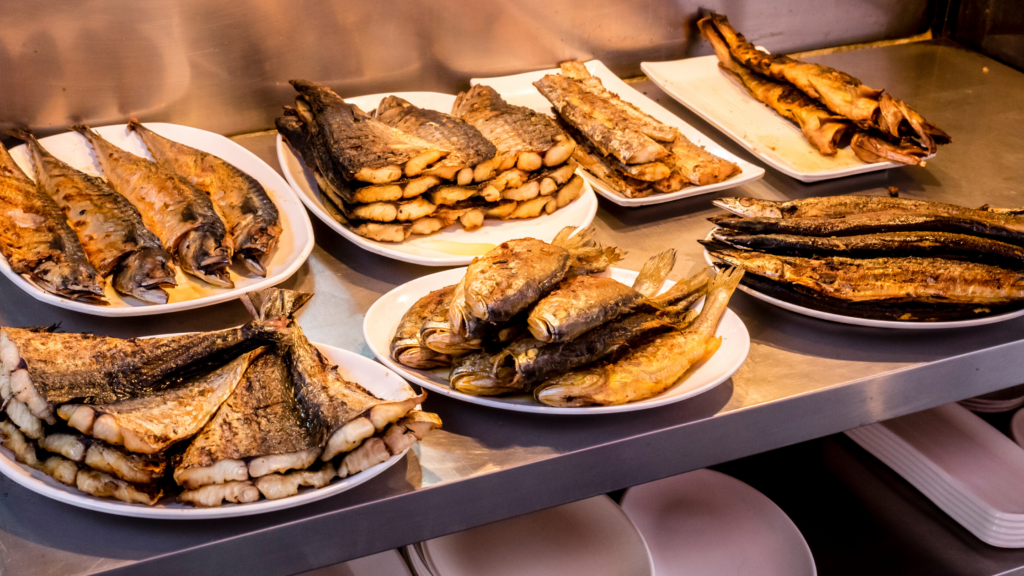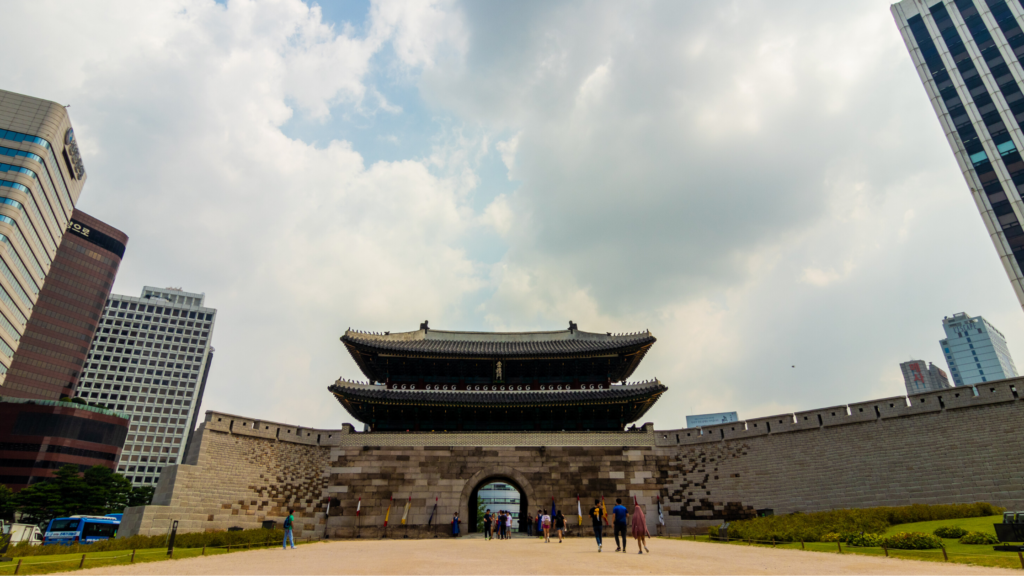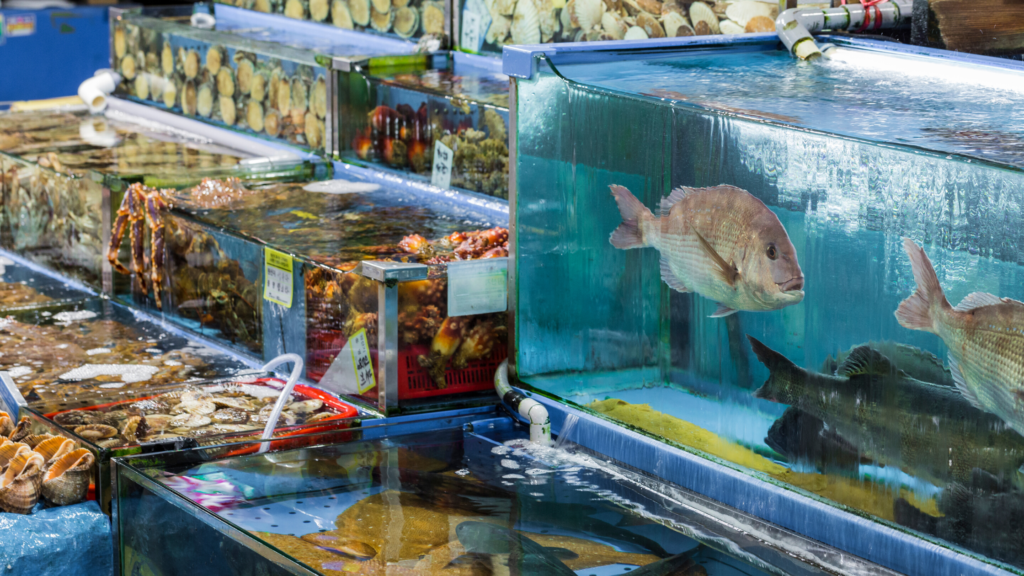You are on a trip to Seoul, what is on your to-do list? Of course, you need to see the palaces, maybe Gyeongbokgung traditional palace or Changdeokgung. You definitely go to Gangnam to go shopping, and to Itaewon to go clubbing. You visit Namsan Tower to get the best views of the city and to have a little hike. But where do you go to experience some traditional Korean street food and eating culture? To traditional markets of course! And luckily, Seoul has many wonderful traditional markets for you to roam, where you can not just try the most delicious street food but where you can also buy clothes and souvenirs.
Contents
What Are Traditional Korean markets?
Korean traditional markets are 100% worth a visit. They are made of little streets lined with hundreds of stalls that sell everything from fresh vegetables and live fish, to delicious street food, clothes, and souvenirs. The markets are run by Korean ajummas and ajusshis, middle-aged Korean women and men affectionately called auntie and uncle. All they long they advertize their wares, shouting loudly to make sure that their stall is the most visited.
Seoul has many traditional markets that all have different specialities. Some markets, like Namdaemun, are well-known for their cheap clothing and kitchenware. Noryangjin Fish Market is the place to go to buy live seafood – and eat it above the market too! For street food, spend a few hours at Gwangjang market to sample all the deliciousness Korea has to offer. All in all, you definitely should visit a traditional market while on a trip in Seoul – if not two or three!

Traditional Markets in Seoul
Let’s have a look at some of the most popular traditional Korean markets in Seoul. These markets are not only popular amongst tourists, but many Koreans also frequent them for fun days out with friends, or when on a date.
1. Namdaemun Market
Namdaemun Market (남대문 시장) is maybe one of the most well-known traditional markets in Seoul. It is situated in a charming – albeit a little rugged – neighborhood near the old south gate of Seoul, hence the name “Great South Gate Market”. It is Seoul’s oldest market, dating back as far as the 1400s. Many sellers have tried to sell their wares there since, and Namdaemun Market has grown to be the place for cheap kitchenware and clothes.
The sellers at Namdaemun Market sell a huge variety of (fake) designer clothes and bags, as well as accessories. You can also buy cheap kitchen items here. In recent years, many souvenir shops have opened their doors here as well as many tourists frequent the market. The best thing? Most items are sold at wholesale prices, so you are sure to find a bargain here!
As the market has become hugely popular among tourists and locals, there are also many vendors offering delicious street food, such as juices, banana breads, churros, Tteokbokki, and more. If you get peckish while choosing your next pair of (fake) designer socks, you can recharge for another round of shopping!

2. Gwangjang Market
One of the largest markets in Seoul, Gwangjang Market (광장 시장) was established in 1905, making it one of the oldest permanent markets in Korea. This market is very popular among visitors because of its many, many food stalls selling delicious traditional Korean street food – such as Tteokbokki, Sundae, all kinds of Jeon, and more!
Gwangjang Market is truly massive, over 42,000 square meters large with more than 5,000 shops. Originally this market was a textile market, so the market’s second floor – yes Korean markets have multiple stories – is dedicated to anything textile. Here you can buy silks, get dresses custom made, and alter items of clothing. You can also order a custom Hanbok while you are at it!
3. Tongin Market
This cute traditional market to the west of Gyeongbokgung Palace is a must-visit for all Tteokbokki lovers. Tongin Market (통인 시장) is quite a new market, as it was established in 1941 for Japanese residents when Korea was under Japanese rule. It used to cater to Japanese residents mostly, but after Korean independence started selling more goods that appealed to Korean residents. It was renewed in the early 2000s to attract more visitors. It is quite a small market, with around 70+ stalls, that is mainly known for its good street food and Tteokbokki in particular.
4. Noryangjin Fish Market
Noryangjin Fish Market (노량진 수산시장) is one of the most special places to visit when in Seoul. Not your average traditional market, Noryangjin only sells seafood. And lots of it, alive. There are octopuses, clams, salmon and tuna, crabs, and all other kinds of seafood you can think of – and many kinds you have never even seen or heard of.
Noryangjin is a huge market where on the first floor, you can pick your fish and bring it home with you. However, you can also eat it upstairs, as there are many little restaurants above the market. You simply choose your fish and seafood from a vendor, and the associated restaurant will come to pick you up to prepare delicious dishes for you, ranging from raw fish (like sushi) and fish salads to fish head soup! No part of the fish goes to waste at the market.

5. Majang Market
Another market that is not very well-suited for vegetarians, but still an interesting sight: Majang Meat Market (마장 축산물시장). Majang Market is a meat wholesale market, where you can buy all kinds of the freshest meat. Many small restaurant owners buy their meat here to ensure it is of the highest quality. Although it might sound a little unhygienic – one big market for raw meat – you can be ensured that all of the facilities are of the highest standard and comply with modern regulations.
Majang Market has grown in fame due to Korean Youtubers that have gone there to do a Mukbang where they ate a lot of meat. You can enjoy some of the most delicious, fresh meat here, so if you love Korean barbeque, it is definitely worth a visit.
6. Mangwon Market
Mangwon Market (망원 시장) is a traditional market in the hip and trendy neighborhood of Mangwon-dong. This market sells all kinds of delicious street food that has often been modernized to cater to its trendy residents. You can try different flavors of Tteokbokki (like rose, or carbonara), different kinds of fried chicken, and traditional Korean alcohol. It is close to Han River Park, so great for a day out!
Must Try Korean Street Food
When visiting a Korean traditional market, you need to try traditional Korean street food. There are lots of things to try – you can eat all day and still have foods left to try. Here are some of our favorite dishes that you can find at any market!
1. Tteokbokki
Tteokbokki, or 떡볶이 in Korean, literally means stir-fried rice cakes. It might be one of the most popular Korean street food dishes, especially in America, so definitely try it out. The rice cakes are chewy, long, and cylinder-shaped and they are typically stir-fried in a spicy gochujang (chili paste) sauce, together with scallions, boiled eggs, and Eomuk (fish cakes). Cheese is also often added to it, to help negate the spicy flavors. Tteokbokki is the perfect street food, as it keeps you warm on the inside and can easily be eaten on the go (or sitting down). There are many flavors of Tteokbokki you can try, such as cheese, rose (a creamy-spicy sauce), carbonara (like the Italian cream pasta), and super spicy Tteokbokki.
2. Odeng
Odeng (오뎅) or Eomuk is a Korean fish cake soup that is often served outside of subway stations or at traditional Korean markets. It is made by boiling large pieces of fish cake in a hearty, savory broth. After you pay, you can take the pieces you want from the broth, put them in a small paper cup and add some of the broth to it. It is often a very cheap dish, around 1,000 won (1 dollar) gets you 2 pieces depending on where you are. Perfect for wintery, cold days or as a pick-me-up!
3. Gyeranppang
Gyerangppang (계란빵) literally means egg bread, and there is no better way of describing this dish. It is a whole egg in a sweet bun. Sounds weird? Yes, definitely and it looks a little weird as well. However, the deliciousness is undeniable. The bread is soft and chewy and the egg matches perfectly. It can be eaten sweet, with some seeds or cream as a topping, or savory with scallions or cheese.
4. Bungeoppang
Although it looks like a fish, Bungeoppang (붕어빵) is definitely not fishy. It is actually made from pancake batter and filled with red bean paste. It is molded in the shape of a fish and baked until golden, crispy, and very aromatic. It is the perfect snack when out on the streets and you can get them almost everywhere. They are particularly popular during winter, when you can often smell them from far away already.

3 Replies to “Traditional Markets in Seoul”
Comments are closed.